As a seasoned explorer of global cultures and experiences, I can confidently say New York City is a universe unto itself. Deciding where to start in this bustling metropolis can feel overwhelming, whether it’s your first visit or tenth. From iconic landmarks to hidden neighborhood gems, the list of must-sees is endless. Having guided countless visitors through its streets, I understand the challenge of prioritizing.
That’s why I’ve curated a list of the best tourist places in New York – spots that truly capture the city’s spirit, history, and vibrant life, offering experiences far beyond the typical tourist traps. For those planning a whirlwind trip and wondering [what to see in new york in 2 days], this guide offers essential starting points.
Iconic Landmarks: Statue of Liberty and Ellis Island
Undoubtedly, the Statue of Liberty and Ellis Island stand as powerful symbols, not just of New York City, but of the American story itself. The Statue of Liberty represents freedom and opportunity, her presence a beacon for generations. Ellis Island, the gateway for millions of immigrants, holds a profound connection to the ancestry of nearly half of the American population.
While viewing the Statue from a distance is certainly an option, taking the ferry to Liberty Island offers a closer, more impactful experience. You can visit the Statue of Liberty Museum to delve into its history and construction, and climbing the pedestal provides remarkable views back towards the Manhattan skyline. From there, a short ferry ride takes you to Ellis Island, where the Immigration Museum tells compelling stories of arrival, hope, and the challenges faced by those seeking a new life. Both islands offer unique, moving experiences that are essential for understanding the city’s foundational identity.
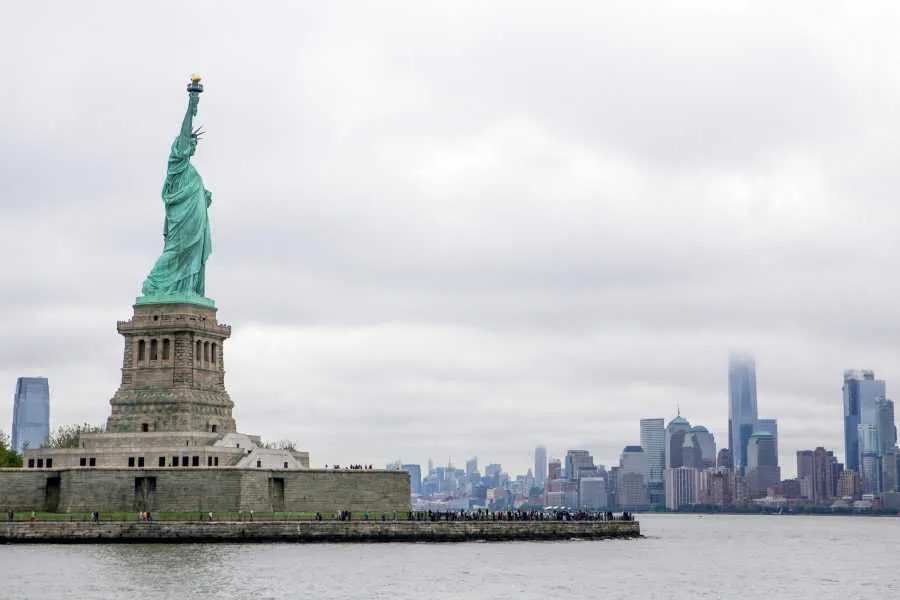 Statue of Liberty and NYC skyline viewed from a ferry in the harbor
Statue of Liberty and NYC skyline viewed from a ferry in the harbor
Experience the Magic: Broadway
New York’s Theater District is home to over 40 professional theaters, making Broadway the undisputed capital of live theatrical performance. Stepping into a Broadway theater is an experience that transcends the ordinary; it transports you into a world of dazzling lights, captivating stories, and breathtaking talent. Whether you choose a brand new musical, a long-running classic, or a thought-provoking play, the energy and artistry on display are unparalleled.
Among the many things [what to do in newyork], catching a Broadway show is a quintessential experience. While tickets can sometimes be pricey, there are various strategies for finding more affordable options, from queuing at TKTS booths to utilizing discount apps. Beyond just seeing a show, exploring the history and secrets of the Theater District itself adds another layer to the experience. The streets buzz with anticipation before performances and lively discussion afterward, embodying a unique aspect of NYC culture.
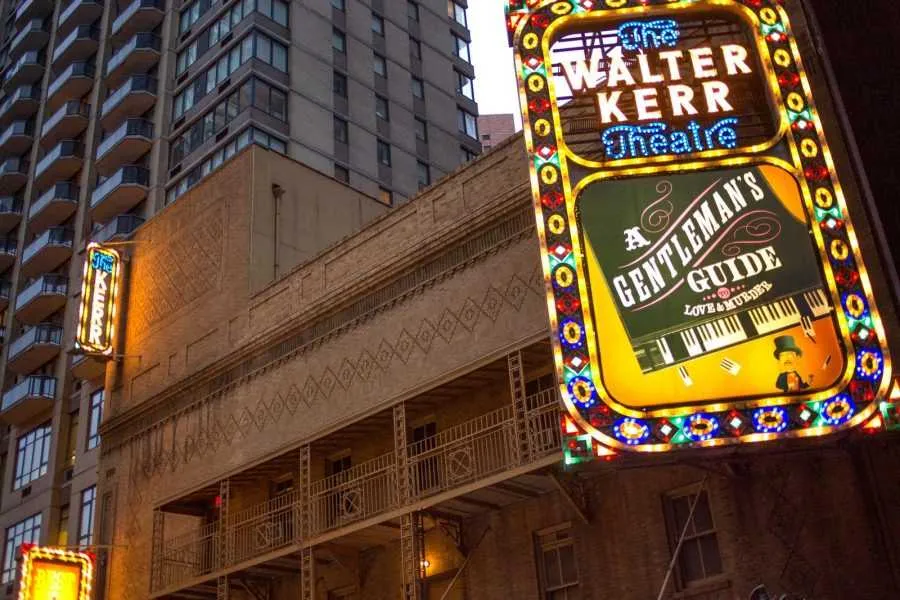 Bright lights of a Broadway theater marquee in the Times Square district of New York City
Bright lights of a Broadway theater marquee in the Times Square district of New York City
A Walk to Remember: The Brooklyn Bridge
Walking the iconic Brooklyn Bridge is an easy, rewarding adventure that also serves as a perfect gateway to exploring the borough of Brooklyn. As one of the world’s first steel-wire suspension bridges, it’s an architectural marvel. The dedicated pedestrian walkway offers spectacular, unobstructed views of the Manhattan skyline, the East River, and the Statue of Liberty in the distance.
For the most breathtaking views and a potentially less crowded start, begin your walk on the Brooklyn side and head towards Manhattan. This direction keeps the stunning cityscape unfolding before you as you stroll across. The bridge itself is a sight to behold, with its grand stone towers and intricate cable patterns. A truly magical time to walk is during sunset, as the buildings of Manhattan begin to light up, creating a glittering panorama. It’s an experience that combines history, engineering, and unforgettable urban scenery.
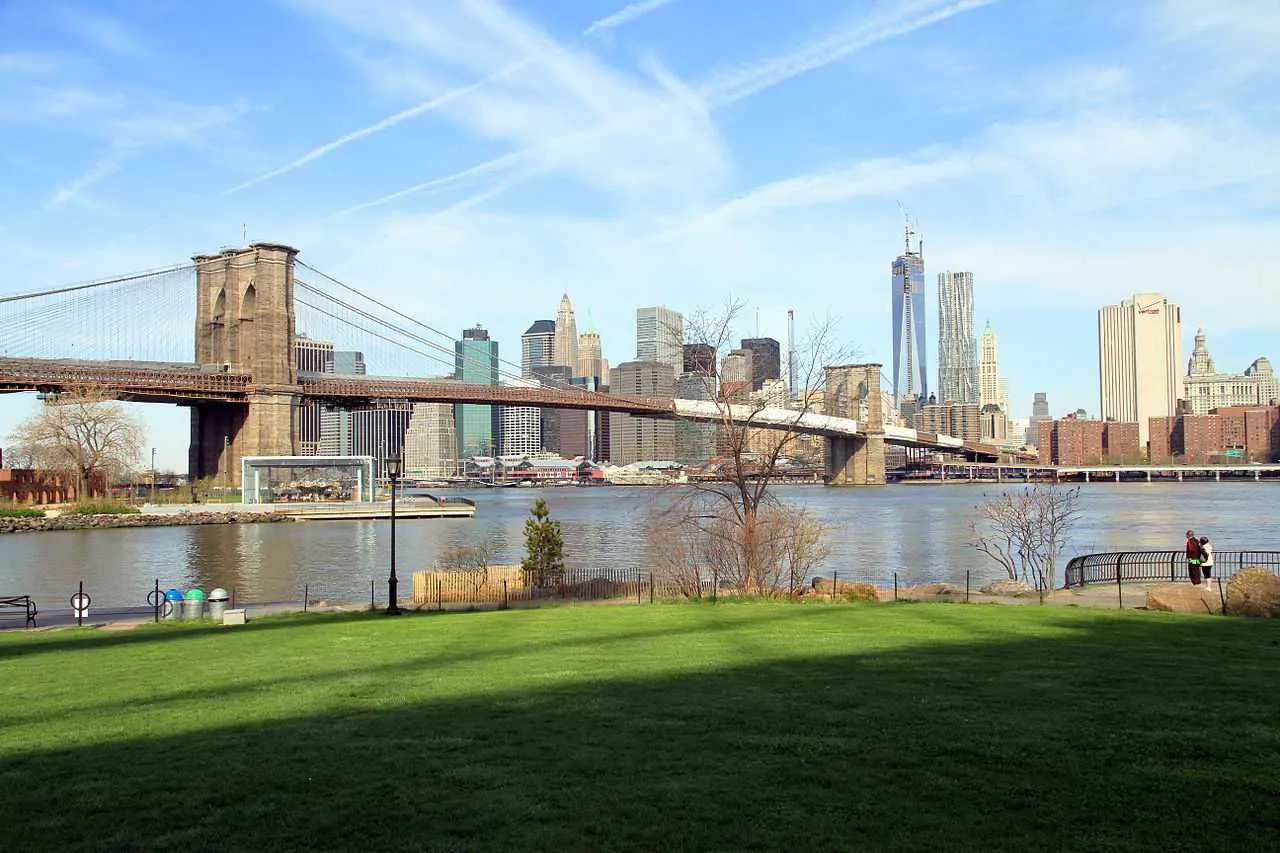 Pedestrian walkway of the historic Brooklyn Bridge connecting Manhattan and Brooklyn
Pedestrian walkway of the historic Brooklyn Bridge connecting Manhattan and Brooklyn
Skyline Views from the Best Tourist Places in New York: Observation Decks
New York City boasts one of the most recognizable and awe-inspiring skylines on the planet, and its array of world-class observation decks allows visitors to appreciate its grandeur from above. The Empire State Building, Top of the Rock (at Rockefeller Center), One World Observatory, and Edge (at Hudson Yards) each offer distinct perspectives and experiences. Choosing just one can be difficult, but each guarantees a memorable view.
The Empire State Building provides a classic, historic view from a legendary Art Deco skyscraper. Top of the Rock offers stunning views of the Empire State Building and an incredible panorama including Central Park. One World Observatory, located at the top of the Western Hemisphere’s tallest building, provides sweeping views from a significant historical site. Edge, with its unique outdoor platform jutting out from the building, offers a thrilling, almost floating-in-the-sky experience. While visiting all four isn’t necessary for most travelers, selecting one that aligns with your preferred view or experience is highly recommended. When compiling your list of [what to see in new york], these panoramic viewpoints are non-negotiable.
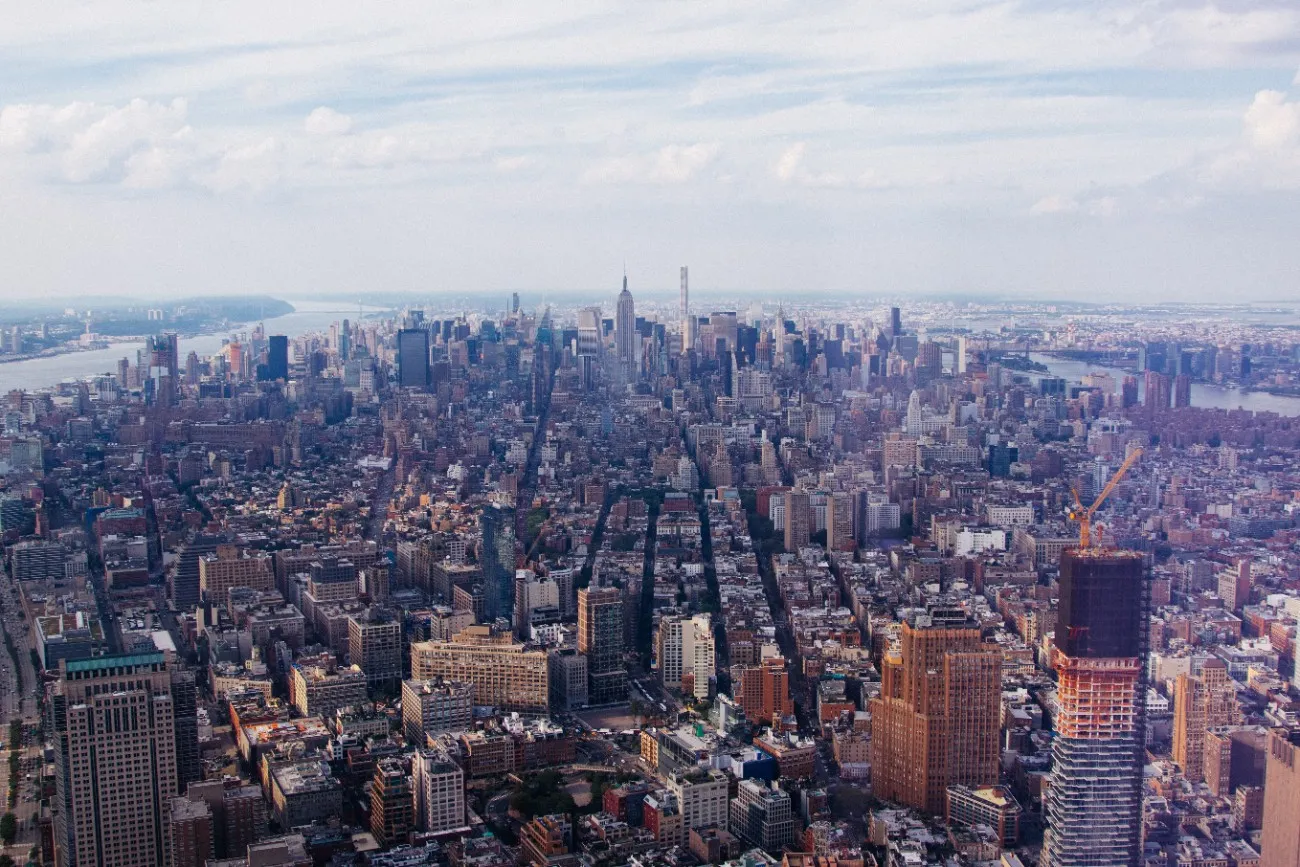 Panoramic view of lower Manhattan and New York Harbor from the One World Observatory
Panoramic view of lower Manhattan and New York Harbor from the One World Observatory
NYC’s Green Oasis: Central Park
A sprawling, verdant oasis in the heart of Manhattan, Central Park is far more than just a park; it’s the city’s backyard, its lungs, and a vital hub of local life and recreation. Saving a visit for a day with good weather is ideal, allowing you to truly immerse yourself in its diverse landscapes and vibrant atmosphere. Rainy days, while still offering scenic views, limit the outdoor activities that make the park so special.
Within its 843 acres, you can stroll through the serene paths of The Ramble, pay solemn tribute at Strawberry Fields (the John Lennon memorial), glide across the ice at Wollman Rink in winter, or simply relax and picnic in the expansive Sheep’s Meadow alongside New Yorkers. Visiting Central Park offers a genuine glimpse into the daily routines and leisure activities of the city’s residents. Speaking of seasons, if you’re visiting in winter, discover [what to do in new york in december], including the magical ice skating here.
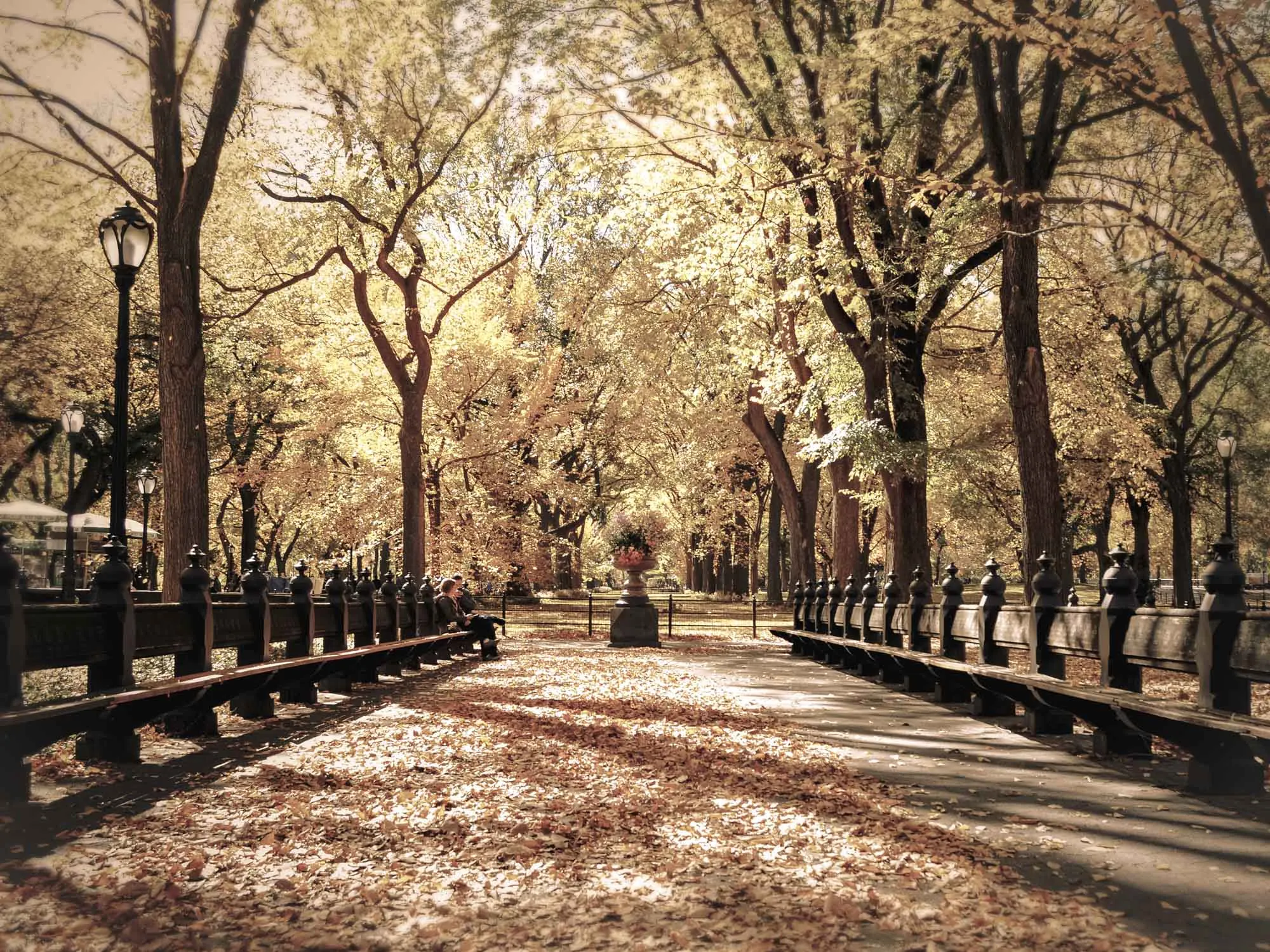 People strolling along The Mall, a tree-lined walkway in Central Park, one of the best tourist places in New York
People strolling along The Mall, a tree-lined walkway in Central Park, one of the best tourist places in New York
Culinary and Cultural Hubs: Little Italy and Chinatown
New York City’s remarkable diversity is perhaps best exemplified by neighboring enclaves like Little Italy and Chinatown. These two distinct neighborhoods, located side-by-side, offer a fascinating cultural juxtaposition within mere blocks. Exploring them provides a sensory journey through different traditions, languages, and most notably, cuisines.
Discover the Best of What to Do in Downtown Denver – Your Ultimate Guide
Discover the Best Brunch in Denver – A Local’s Guide
Top 10 Places to Visit in Nevada with Family for an Epic Trip
Little Italy, centered mainly around Mulberry Street, evokes a nostalgic charm with its numerous Italian restaurants, bakeries, and shops. The aroma of garlic and tomato sauce fills the air, and you’ll find endless options for classic pasta dishes, pizza, and delectable pastries like cannoli. The neighborhood also hosts lively street festivals throughout the year, celebrating Italian heritage.
Crossing Canal Street instantly transports you to Chinatown, a bustling district that feels like a city within a city. Here, you can explore vibrant markets selling fresh produce and exotic ingredients, discover authentic dim sum houses and seafood restaurants, and browse shops offering everything from traditional medicine to unique souvenirs. For travelers thinking about [what to visit in new york] beyond the major landmarks, immersing yourself in these vibrant ethnic enclaves is essential. Both neighborhoods are testaments to the immigrant history that has shaped NYC’s identity.
![]() Iconic archway marking the entrance to Chinatown in New York City
Iconic archway marking the entrance to Chinatown in New York City
World-Class Culture: The Metropolitan Museum of Art
New York City is home to an impressive collection of museums, but the Metropolitan Museum of Art, affectionately known as “The Met,” stands out as a cultural titan. As the largest art museum in the United States and one of the most visited worldwide, its collection spans over 5,000 years of human creativity and boasts more than two million works.
Exploring The Met is a journey through global history and artistic achievement. From ancient Egyptian temples and Roman sculptures to European masters, Islamic art, and modern masterpieces, the sheer scale and breadth of the collection are staggering. It’s impossible to see everything in a single visit, but focusing on specific wings or periods allows for a deeply enriching experience. Understanding the stories behind the artworks – their creation, context, and impact – transforms a viewing into a connection. Conveniently located on the edge of Central Park, The Met offers a perfect combination of art, culture, and urban green space.
 Grand facade of the Metropolitan Museum of Art, a world-renowned museum in New York City
Grand facade of the Metropolitan Museum of Art, a world-renowned museum in New York City
Architectural Wonders: Grand Central Terminal
More than just a transportation hub, Grand Central Terminal is a magnificent Beaux-Arts masterpiece and one of New York City’s most beloved buildings. Since its grand opening in 1913, it has served not only as a vital link for commuter rail but also as a stunning public space.
The Main Concourse is the terminal’s breathtaking centerpiece, with its famous celestial ceiling mural depicting constellations against a turquoise sky, soaring 125 feet above the bustling floor. The architecture throughout the building features intricate details, grand staircases, and vast open spaces that evoke the glamour of early 20th-century travel. Taking a moment to simply stand in the Main Concourse, observing the flow of nearly three-quarters of a million people daily, is an experience in itself. Don’t forget to admire the building’s equally impressive exterior facade facing Park Avenue.
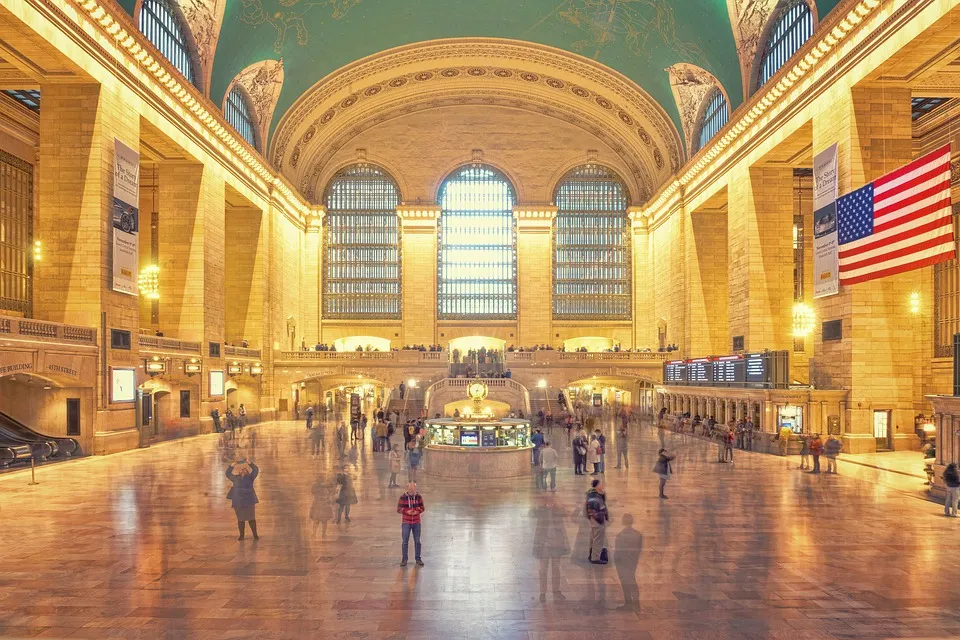 The vast Main Concourse of Grand Central Terminal with its famous celestial ceiling mural
The vast Main Concourse of Grand Central Terminal with its famous celestial ceiling mural
Urban Innovation: The High Line
One of New York’s most unique and beloved public parks, The High Line is an elevated linear park built on a disused freight rail line along Manhattan’s West Side. Stretching for over a mile and a half, from Gansevoort Street in the Meatpacking District to 34th Street, this innovative park offers a refreshing perspective on the city.
Since its full completion in 2016, The High Line has become a must-visit destination. Walking its path feels like strolling through a garden suspended above the city streets. The design incorporates native plants, art installations, and quiet seating areas amidst the original railway tracks, blending nature and urban landscape seamlessly. It provides elevated views of the Hudson River, architectural landmarks, and the bustling neighborhoods below, including Chelsea and Hudson Yards. It’s a testament to creative urban redevelopment and offers a peaceful, scenic retreat from the street-level energy.
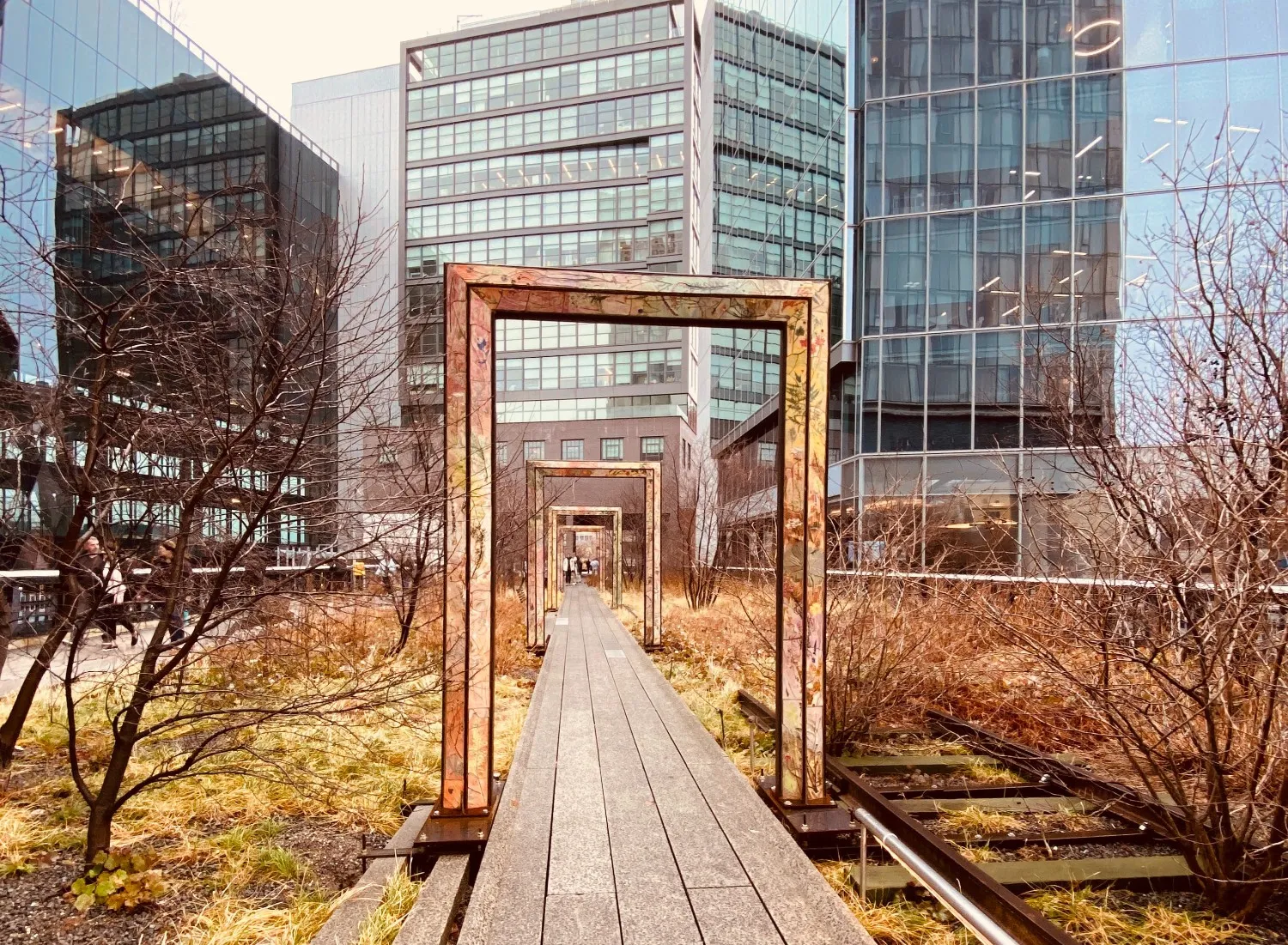 Visitors walking on the High Line, an elevated urban park built on a former railway in NYC
Visitors walking on the High Line, an elevated urban park built on a former railway in NYC
Reflection and Resilience: The 9/11 Memorial
The events of September 11, 2001, left an indelible mark on New York City. The 9/11 Memorial and Museum serve as a powerful and moving tribute to the victims and a testament to the city’s resilience. Located at the site of the former World Trade Center, known as Ground Zero, the memorial is both somber and beautiful.
The core of the memorial consists of two massive reflecting pools set within the footprints of the Twin Towers. Water cascades down into the pools, creating a constant, gentle sound that evokes a sense of contemplation amidst the urban noise. The names of every person who perished in the attacks are inscribed around the edges of the pools. Adjacent to the memorial is the 9/11 Museum, which provides a deeper, more detailed exploration of the events through artifacts, personal stories, and multimedia exhibits. While emotionally challenging, visiting the memorial and museum offers a crucial understanding of a pivotal moment in modern history and the enduring spirit of New York City.
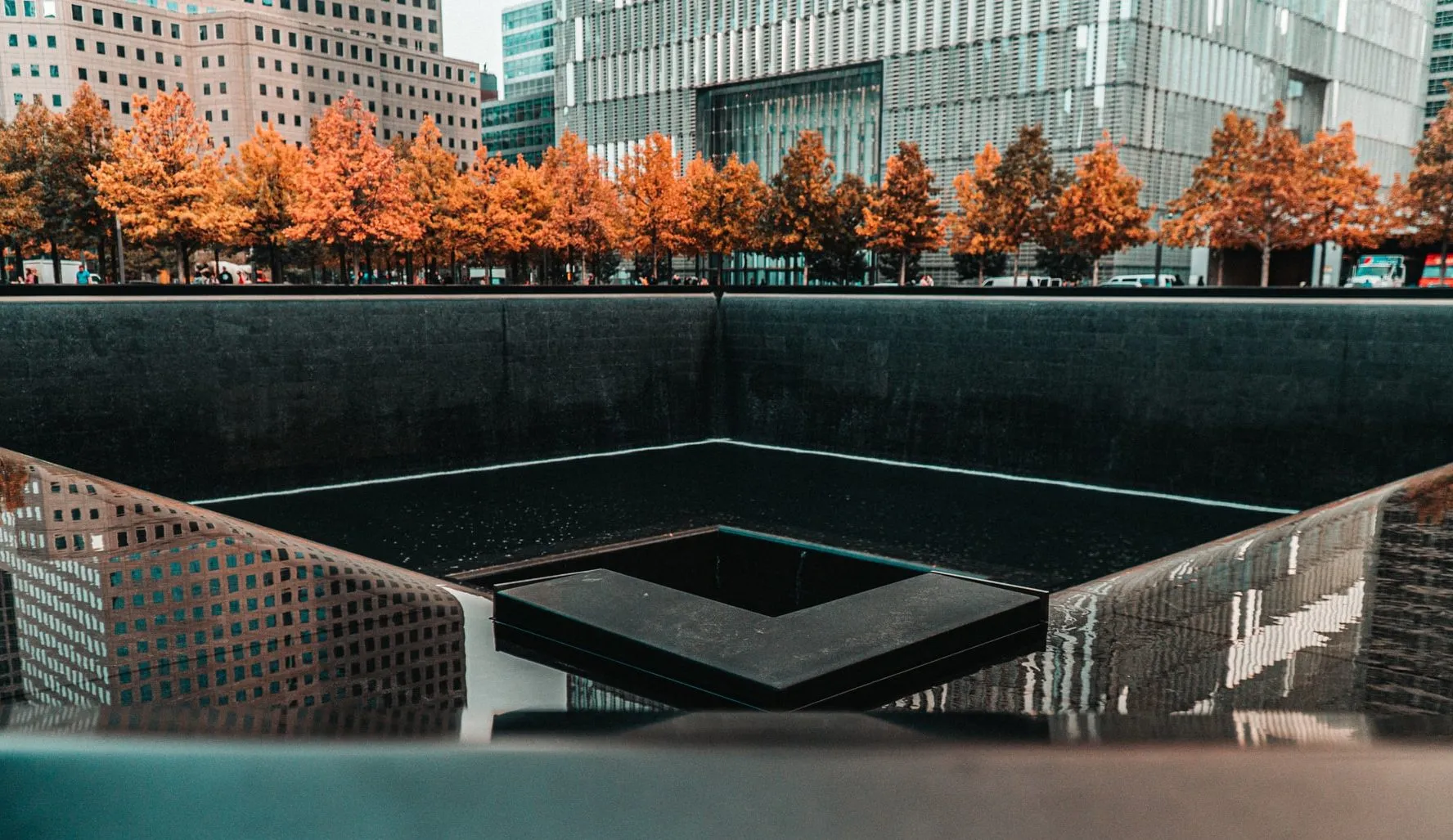 Reflecting pools at the 9/11 Memorial at Ground Zero, commemorating the September 11th attacks in New York
Reflecting pools at the 9/11 Memorial at Ground Zero, commemorating the September 11th attacks in New York
History and Finance: The Financial District
New York’s Financial District is much more than just the center of global finance; it is the historic heart of the city and the birthplace of American government. Exploring this downtown neighborhood reveals layers of history hidden amongst the towering skyscrapers.
Key landmarks include the New York Stock Exchange and the Charging Bull statue, iconic symbols of Wall Street. Federal Hall National Memorial stands on the site where George Washington was inaugurated. Trinity Church, with its historic churchyard serving as the final resting place for figures like Alexander Hamilton, offers a moment of quiet reflection. Battery Park provides waterfront views and serves as the departure point for ferries to Liberty and Ellis Islands. Wandering through the narrow, winding streets like Stone Street, you can still catch glimpses of the area’s Dutch colonial past and find unique spots for dining. This district offers a rich blend of historical significance and modern financial power.
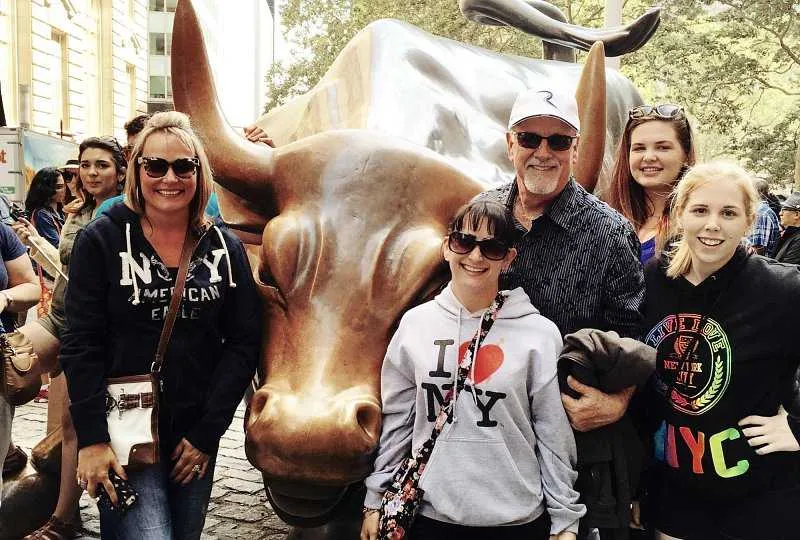 The Charging Bull statue, a symbol of Wall Street, located in New York’s Financial District
The Charging Bull statue, a symbol of Wall Street, located in New York’s Financial District
Exploring Local Life: Greenwich Village, SoHo, and West Village
To truly experience the pulse of local New York life, venture into the distinct and vibrant neighborhoods of Greenwich Village, SoHo, and the West Village. While often grouped together due to their proximity, each possesses its own unique character and charm.
Greenwich Village is steeped in history as a bohemian capital, known for its jazz clubs, folk music scene, literary cafes, and the iconic Washington Square Park. It exudes a relaxed, intellectual vibe. SoHo (South of Houston Street) is famous for its cast-iron architecture, art galleries, and high-end shopping. It’s a trendy, bustling district. The West Village, with its tree-lined streets, charming brownstones, and independent boutiques and restaurants, offers a more residential, picturesque feel. Exploring these neighborhoods allows you to wander off the typical tourist path and experience the daily rhythm of the city’s diverse communities. Grab a coffee, browse unique shops, enjoy a meal, or simply soak in the atmosphere.
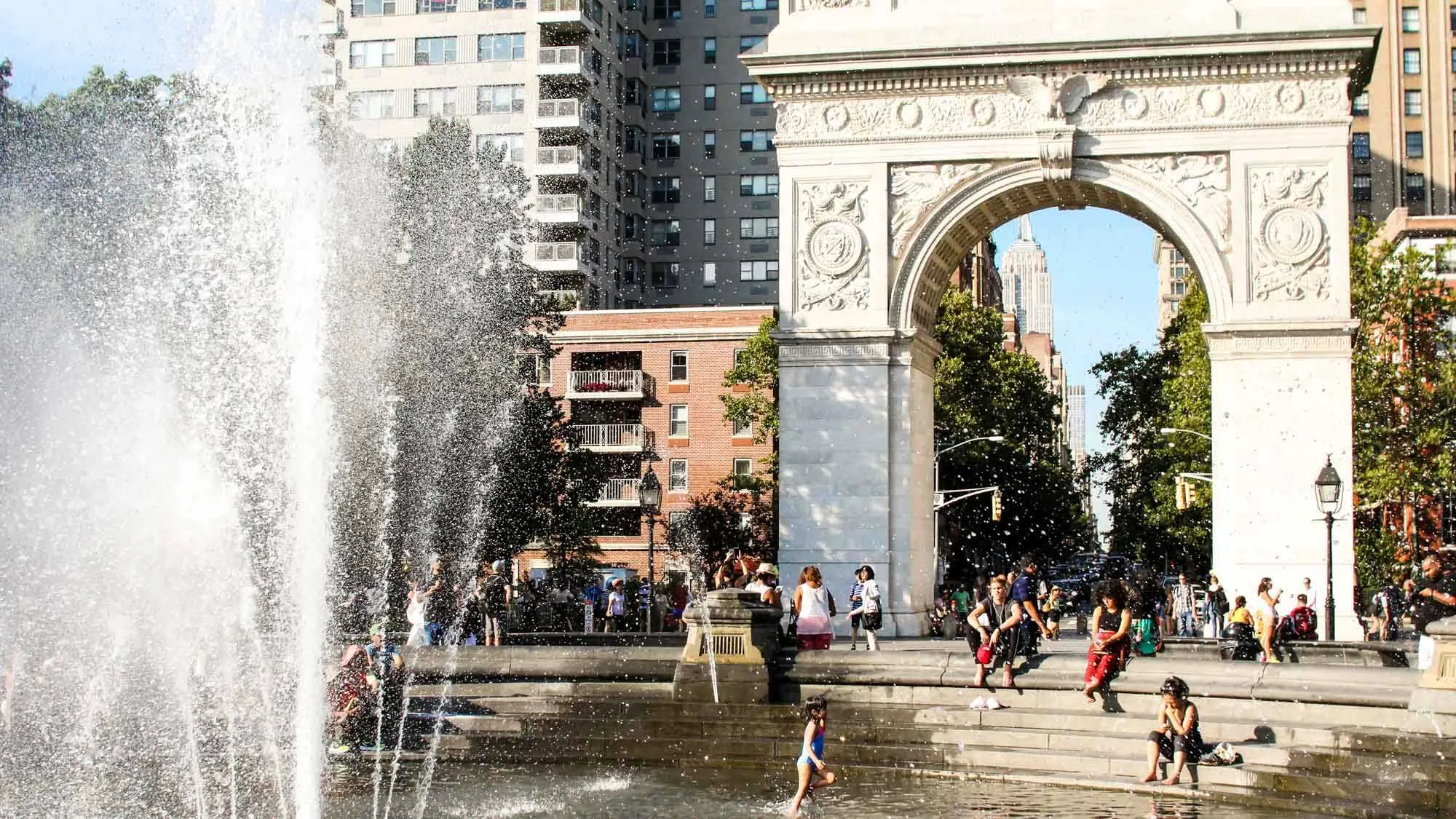 Washington Square Park Arch and fountain in Greenwich Village, a vibrant neighborhood in New York City
Washington Square Park Arch and fountain in Greenwich Village, a vibrant neighborhood in New York City
Planning Your Visit to the Best Tourist Places in New York
Deciding which of the best tourist places in New York to visit depends heavily on your interests and the time you have available. Each neighborhood and landmark offers a unique slice of the city’s multifaceted identity – from its historical roots and cultural contributions to its modern marvels and vibrant street life. A well-planned itinerary can help you maximize your experience. Consider grouping nearby attractions together to save time on travel.
Remember to also factor in time for simply wandering and soaking in the city’s incredible energy, as some of the most memorable moments happen spontaneously. For specific recommendations based on visit length or time of year, you might find further planning guides helpful. If you are curious about [what to see in new york], expanding your research beyond this list is always a good idea.
Frequently Asked Questions about the Best Tourist Places in New York
Q: What is considered the #1 must-see tourist place in New York?
While subjective, the Statue of Liberty and Ellis Island are often cited as the most iconic and historically significant places for first-time visitors. Times Square and Central Park are also contenders for sheer recognition and popularity.
Q: How can I get around to see the best tourist places in New York?
New York City has an extensive public transportation system, primarily the subway and buses, which is the most efficient way to get around. Walking is also excellent for exploring neighborhoods like Greenwich Village or the Financial District. Taxis and ride-sharing services are widely available but can be costly, especially in traffic.
Q: What’s the best time of year to visit New York’s top tourist places?
Spring (April-May) and Fall (September-October) generally offer pleasant weather for exploring outdoors. Summer can be hot and crowded, while winter can be cold but offers unique experiences like ice skating in Central Park and holiday decorations. If you plan to visit in colder months, knowing [what to do in new york in december] is helpful.
Q: Are there any free best tourist places in New York?
Absolutely! Walking the Brooklyn Bridge, strolling through Central Park, visiting the 9/11 Memorial (the museum has an entrance fee), walking the High Line, and exploring neighborhoods like Chinatown and Little Italy are all free experiences. Many museums also offer free admission on certain days or hours.
